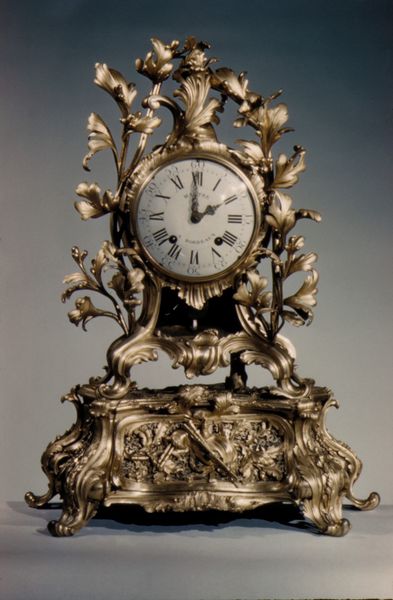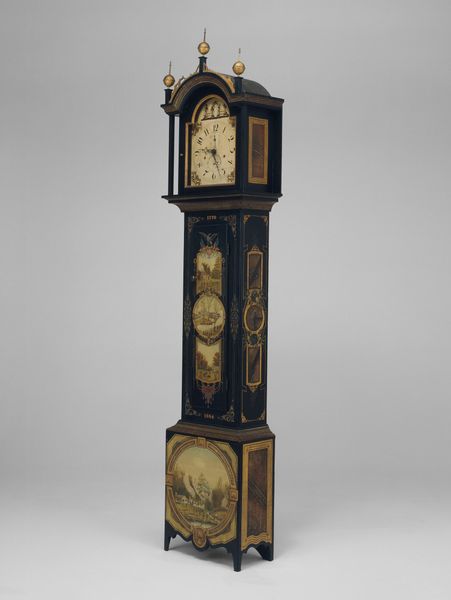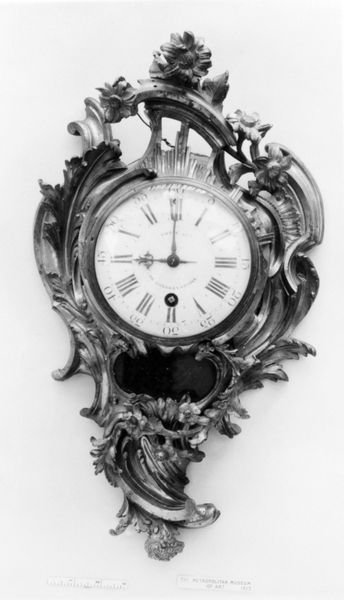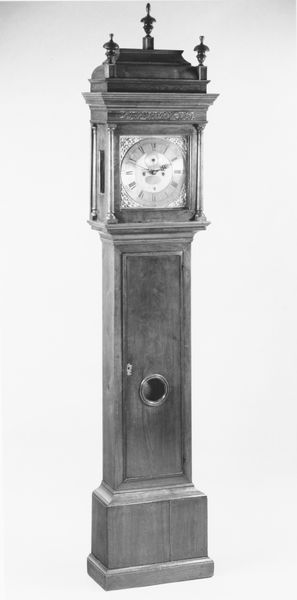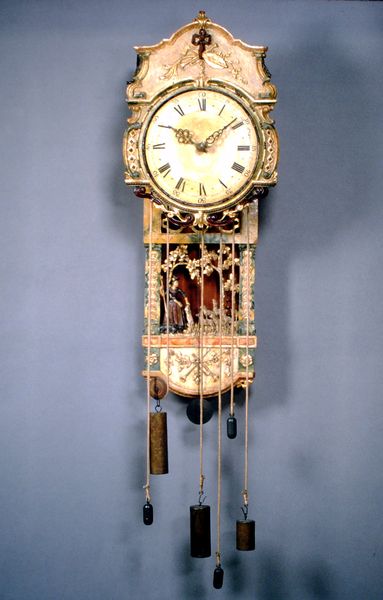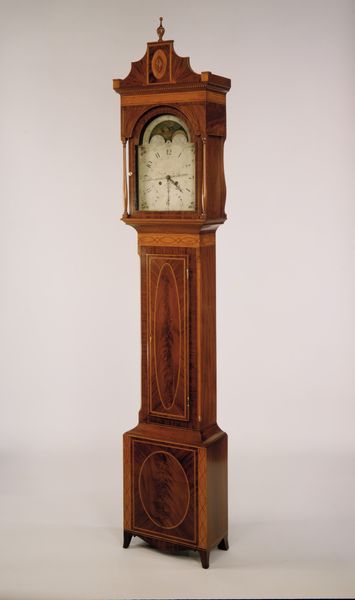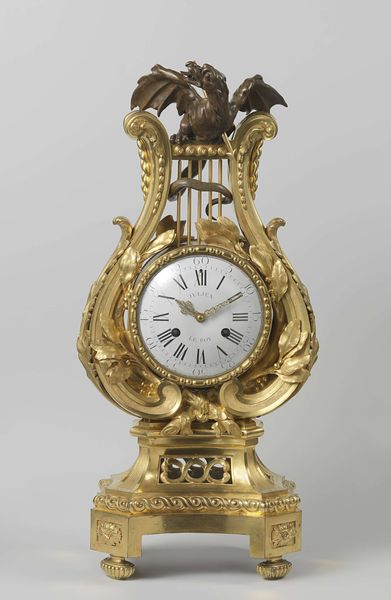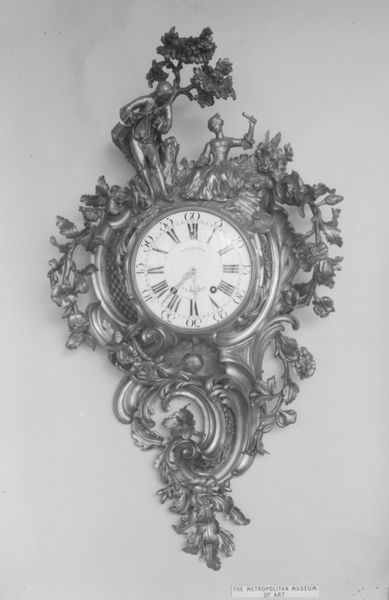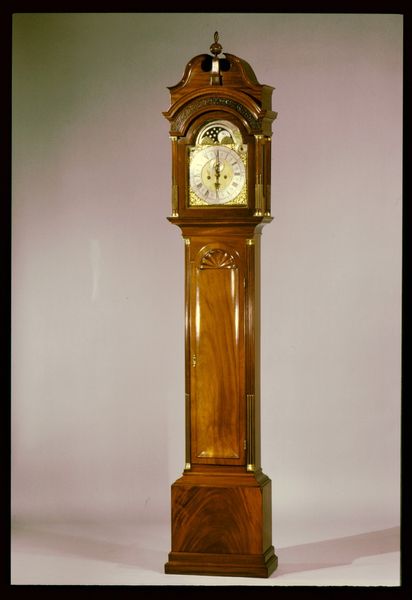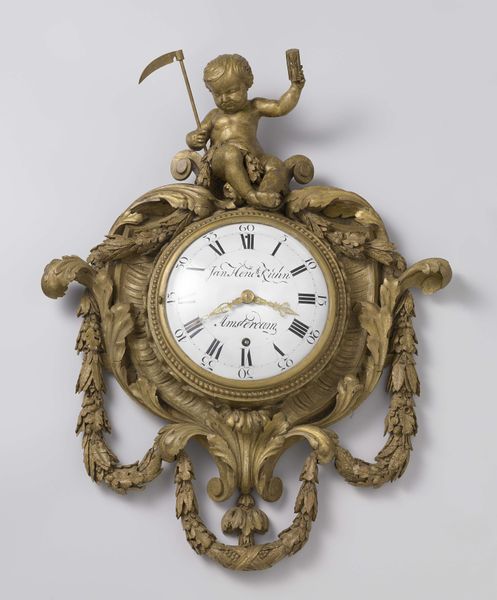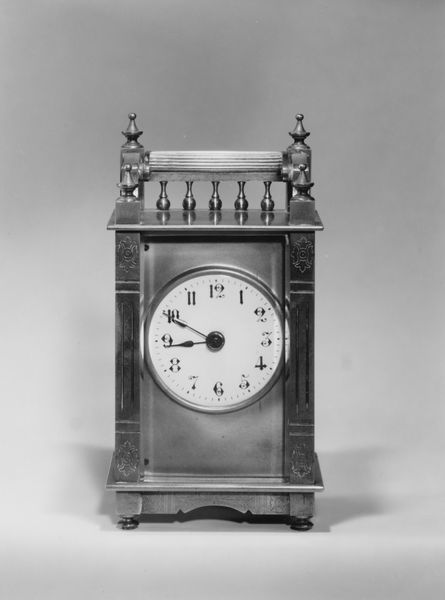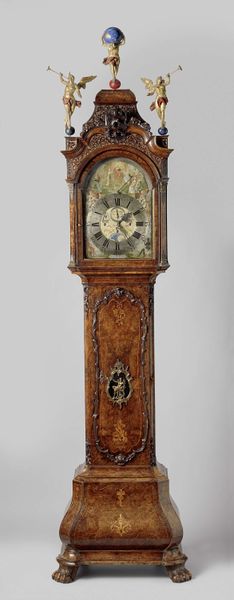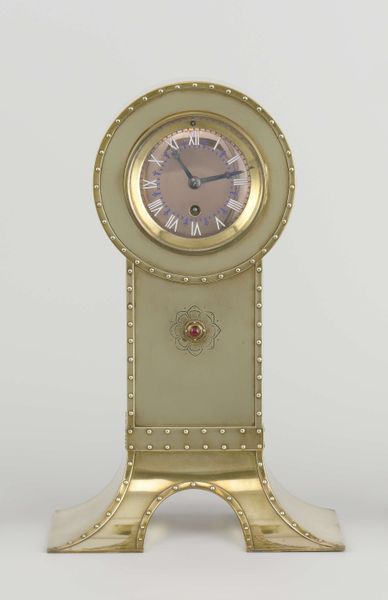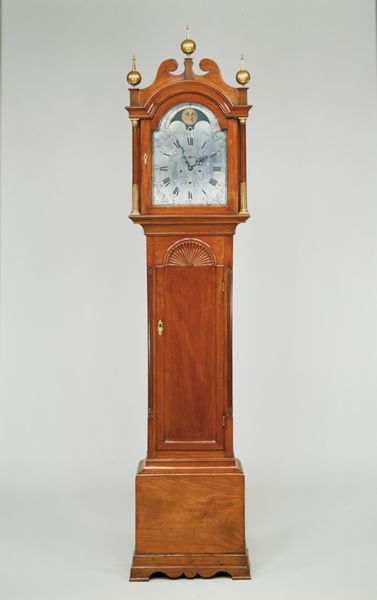
Wall clock-barometer (baromètre et thermomètre en cartel) 1765 - 1775
0:00
0:00
Dimensions: Overall: 46 1/4 × 15 1/2 × 4 1/2 in. (117.5 × 39.4 × 11.4 cm)
Copyright: Public Domain
Editor: Here we have an ornate wall clock-barometer from around 1765-1775, currently housed at the Metropolitan Museum of Art. It is such an elaborate combination of utility and ornament. What stands out to you about its composition? Curator: The clock’s structural elements, observe their deliberate articulation. Note the interplay between the circular dial and the elongated, rectilinear form of the barometer. This contrast establishes a visual rhythm. Furthermore, the lavish use of decorative motifs – floral swags, finials – softens the geometry, imbuing it with dynamism. The silvery material sheathing the entirety binds these elements. Does this ornamental density affect your reading? Editor: Definitely. There is almost a tension between the clock’s function as a scientific instrument, meant for accurate measurement, and its elaborate ornamentation. It feels almost like an ironic statement. Curator: Irony arises from incongruity, but does this decorative language impede upon function? Or does it augment it? Consider the implications of embellishment and how this object transcends utilitarianism. Note the symmetry employed, further grounding the ornamentation in balanced relationships. Does this clarify the artisan's objectives? Editor: Yes, thinking of it as balanced and measured, rather than overwhelming, changes my perception. It's clearly aiming for more than mere functionality; it aspires to artistry through precision and adornment. Curator: Precisely. We see, in its structure and adornment, the expression of aesthetic and technical mastery of an era. It’s not simply about telling time, but about creating a total aesthetic experience. Editor: I will be sure to note the structural composition from now on in my interpretations! Curator: As should we all.
Comments
No comments
Be the first to comment and join the conversation on the ultimate creative platform.
